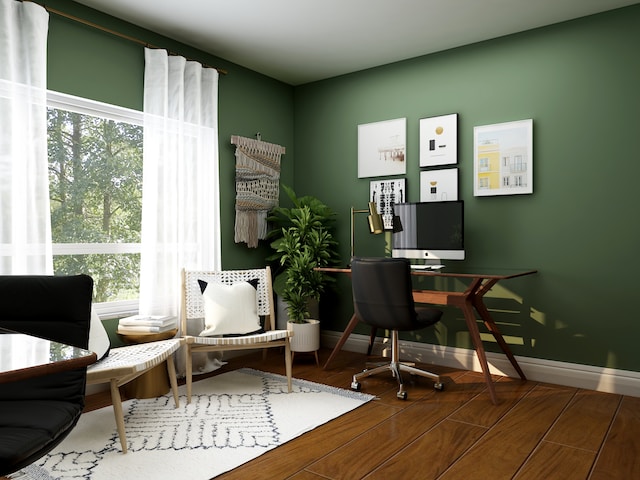When a burglary occurs, more than just physical possessions are lost. Forced, uninvited entry into your home can rob you of your sense of security and peace of mind. It can also cost you a significant sum; according to the FBI, burglary cost a total of $3.6 billion in 2015, with each victim losing an average of $2,316. But all hope is not lost. By getting inside the mind of a burglar, you can learn to make your home as unappealing as possible to a potential thief.
Here’s what a burglar is looking out for when they’re casing your neighborhood:
1. No home security system.
The lack of a home security system is one of the first thing a thief looks for. In a study by the University of North Carolina-Charlotte, 60% of convicted burglars said that a home security system would make them skip over a home because it was too risky.
What you can do: If you have a home security system, be sure to let potential burglars know about it with a yard sign or a decal. A thief is unlikely to walk up and peek in your window if they’re afraid they’ll be recorded.
2. Poor exterior lighting.
Many burglars prefer the night for the most obvious reason: it makes them harder to see. If your home has a lot of dark nooks and crannies, thieves can approach unseen. Your home should be lit from all angles; even if the side of your home doesn’t have a door, it likely has a window a thief can use to gain entry.
What you can do: Install motion-activated security lights around the outside of your home. These will send burglars running when they are caught, quite literally, in the spotlight.
3. Expensive landscaping.
Everyone loves a well-landscaped home. After all, curb appeal is one of the first things potential buyers look for. Keeping your shrubs groomed makes good sense—but it also appeals to thieves. A well-maintained home hints at disposable income, which makes thieves think there may be expensive items inside the home.
What you can do: Make sure your home is well-lit, especially behind tall shrubs and trees that may provide hiding spots for thieves. If possible, keep the main approaches to your home clear of anything that may provide a hiding spot.
4. Empty homes.
Empty homes are easy targets. The presence of a resident means danger to a burglar, as well as the potential for an increased sentence, if caught. If it looks like someone is home, a burglar will usually avoid that location and move on to somewhere else.
What you can do: Purchase timers for your internal lights to provide the illusion that someone is home, even if you aren’t. Home automation systems can serve the same purpose by turning lights on and off at random.
5. Piles of mail.
If your mail and/or newspapers are piling up on your front steps, it usually means no one is around to pick them up. This often tells thieves the home is empty.
What you can do: Before leaving for an extended period of time, go to the post office and ask to have your mail held. Do the same with any subscriptions that arrive on a regular basis.
6. Social media announcements.
When you’re excited about an upcoming trip, you want to let people know, but resist that urge online. Thieves use social media to look for targets. If you let the entire world know you’re going to be away from home, a thief might take that chance to strike.
What you can do: Wait until you get home to post all of your photographs from your trip. If you make updates while you’re away, leave them vague. Don’t give any indication that you’re not at home.
7. No dogs.
Thieves avoid homes with dogs. The size doesn’t matter; a small dog can bark just as loudly as a large one and alert the neighbors. If a thief sees any hint that a dog might live at your home, they will likely move on to somewhere else.
What you can do: Even if you don’t own a dog, a dog bowl on the front porch or scattered dog toys around the yard can be a deterrent.
8. No vehicle in the driveway.
One of the best signs that someone isn’t home is the lack of a vehicle in a driveway. It’s not a foolproof method, but it makes burglars tend to pay more attention. Surprisingly, about 60% of residential burglaries take place in the daytime. If a thief believes you’re at work or picking the kids up from school, your home becomes an easy target.
What you can do: If you have a spare vehicle, leave it parked in the driveway. Make sure there are no valuables in it to entice someone to break into the car.
9. Outside contractors.
Families with regular contractors (landscapers, pavers, maids, etc.) can find themselves the victims of theft. This is because potential thieves may take jobs with a contractor to get inside information about a home. Someone working inside your home doesn’t even need to go through the hassle of breaking in—most have keys, after all.
What you can do: Make sure anyone you hire to work around your home is thoroughly vetted, and hired through a company or platform that you trust.
10. Homes near major highways.
Homes with easy access to major highways are at higher risk of theft because the highway provides an easy escape route. Once a thief finishes their misdeeds, they don’t want to stick around.
What you can do: While you can’t pick up your home and move it, making your home less appealing to thieves in other ways can help reduce the danger posed by a major highway.
While most burglaries are crimes of opportunity, some are planned out in advance. These tips can make your home less of a target and make a thief think twice when deciding on a home to invade.




